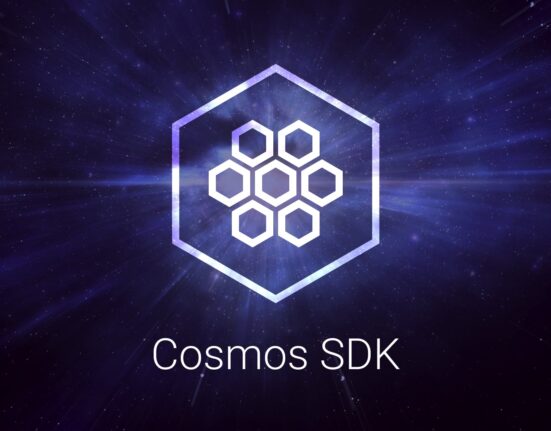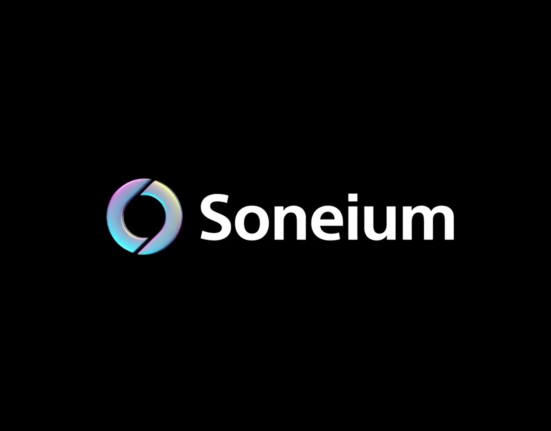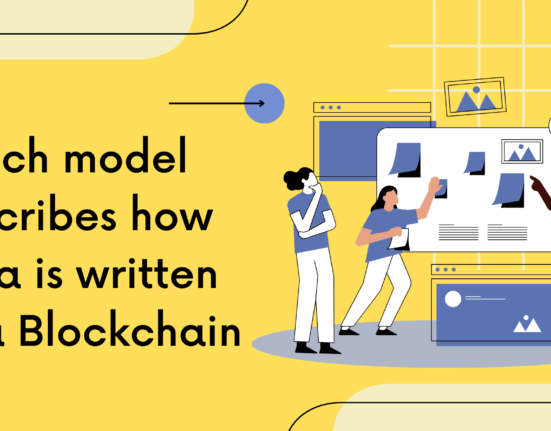In the rapidly evolving landscape of blockchain technology and decentralized systems, a new paradigm is emerging that promises to transform the way we interact with and manage physical infrastructure. Known as Decentralized Physical Infrastructure Networks, or DePIN, this innovative approach combines the power of blockchain, tokenization, and decentralized governance to create more efficient, transparent, and accessible systems for managing real-world assets and services.
Defining DePIN requires understanding its fundamental premise: the application of decentralized technologies to the realm of physical infrastructure. At its core, DePIN leverages blockchain technology, cryptographic tokens, and decentralized governance mechanisms to create a more efficient, transparent, and participatory model for infrastructure management. This approach moves away from traditional centralized control, instead distributing ownership and management across a network of participants.
The key principles of DePIN include decentralization, which shifts control from centralized entities to a distributed network; tokenization, which represents physical assets and services as digital tokens on a blockchain; incentivization, which creates economic models that reward network participants; transparency, which provides open and verifiable records of transactions and operations; and community governance, which enables stakeholders to participate in decision-making processes.
To fully grasp the concept of DePIN, it’s essential to understand its technological stack. This stack consists of multiple layers, each playing a crucial role in the functioning of the system:
- Physical Layer: This is the actual infrastructure, such as cell towers, solar panels, or EV charging stations.
- Hardware Layer: This comprises devices that connect the physical infrastructure to the digital network, including IoT sensors and edge devices.
- Network Layer: This encompasses the communication protocols and systems that enable data transfer.
- Blockchain Layer: This serves as the decentralized ledger that records transactions and manages smart contracts.
- Application Layer: This provides user-facing interfaces and services built on top of the DePIN infrastructure.
The evolution from traditional infrastructure models to DePIN represents a significant shift in how we approach infrastructure development and management. Historically, physical infrastructure has been developed, managed, and maintained by centralized entities, typically governments or large corporations. This model, while functional, has several limitations, including high barriers to entry for new participants, lack of transparency in decision-making and resource allocation, inefficiencies in resource utilization and maintenance, and limited innovation due to monopolistic control.
The advent of blockchain technology and decentralized systems has opened up new possibilities for infrastructure management. These systems offer distributed ownership and control, increased transparency and accountability, lower barriers to entry for innovators and service providers, and more efficient resource allocation through market-driven incentives. DePIN represents the next step in this evolution, combining the benefits of decentralized systems with the physical world.
By enabling the tokenization of real-world assets and services, creating decentralized marketplaces for infrastructure-related services, implementing community-driven governance models, and integrating IoT and edge computing for real-time data management, DePIN is poised to disrupt traditional infrastructure models across various sectors.
Contents
Applications and Use Cases of DePIN:
The potential applications of DePIN span a wide range of sectors, each with its unique challenges and opportunities. In the telecommunications sector, DePIN is already making waves with projects that aim to create decentralized wireless networks. These networks leverage user-operated nodes to provide internet connectivity, potentially expanding access to underserved areas and reducing reliance on traditional telecom giants. For example, the Helium network allows individuals to set up hotspots that provide LoRaWAN coverage, earning cryptocurrency rewards in return. This model has enabled rapid expansion of IoT network coverage while incentivizing individual participation.
In the energy sector, DePIN models are being explored for peer-to-peer energy trading and decentralized grid management. These systems could enable more efficient utilization of renewable energy sources, allow for localized energy markets, and increase the resilience of power grids. Imagine a neighborhood where excess solar energy from one house can be automatically sold to a neighbor in need, all managed through a decentralized network. Projects like Energy Web are working towards this vision, providing a decentralized operating system for energy grids that enables more efficient management of renewable energy sources and creates new markets for energy trading.
Popular DePIN Use Cases
DePIN technology is being applied across various sectors to decentralize traditionally centralized services. The following table highlights some of the most prominent use cases for DePIN projects currently in development or operation.
| Use Case | Example Project | Brief Description |
|---|---|---|
| Wireless Networks | Helium | Decentralized IoT and 5G networks |
| Energy Grids | Energy Web | Peer-to-peer renewable energy trading |
| Data Storage | Filecoin | Distributed file storage and retrieval |
| Weather Data | Weatherflow | Decentralized weather monitoring |
| Ride-sharing | DRIFE | Blockchain-based transportation platform |
Transportation is another sector ripe for DePIN innovation. Decentralized networks could manage electric vehicle charging stations, enabling more efficient utilization and fair pricing. Similarly, DePIN models could be applied to ride-sharing services, creating more equitable platforms that benefit both drivers and riders. The DIMO (Decentralized Infrastructure for Mobility Objects) project, for instance, is creating a decentralized network for connected vehicles, aiming to give vehicle owners control over their data and create new opportunities for services built on this decentralized vehicle data network.
In the realm of environmental monitoring and conservation, DePIN systems could revolutionize how we collect and manage data. Decentralized networks of sensors could monitor air and water quality, forest health, or wildlife populations, with data stored immutably on the blockchain and accessible to researchers, policymakers, and the public alike. This could lead to more transparent and accountable environmental management practices, as well as enable more rapid responses to environmental changes or threats.
Urban infrastructure management is yet another area where DePIN could have a significant impact. From smart city initiatives to waste management systems, decentralized networks could improve efficiency, transparency, and citizen participation in urban services. For example, a DePIN system could manage a city’s waste collection, using IoT sensors to optimize collection routes and schedules, while a token-based incentive system could encourage citizens to participate in recycling programs.
The application of DePIN in these various sectors demonstrates its versatility and potential to create more efficient, transparent, and participatory infrastructure systems. By leveraging the power of decentralized networks and tokenized incentives, DePIN has the potential to overcome many of the limitations of traditional, centralized infrastructure models.
However, it’s important to note that the successful implementation of DePIN in these sectors will require overcoming various challenges, including regulatory hurdles, technical limitations, and the need for widespread adoption. As these systems continue to evolve and mature, we can expect to see increasingly sophisticated applications of DePIN across an even broader range of sectors.
Technical Aspects and Challenges
The implementation of DePIN systems involves a complex interplay of various technologies, each presenting its own set of challenges and opportunities. At the heart of any DePIN system is the blockchain infrastructure, which serves as the backbone of the system. This decentralized ledger technology ensures transparency, immutability, and security of all transactions and data within the network. It also enables the implementation of smart contracts, which automate and enforce the rules and incentives of the system without the need for intermediaries.
Tokenization is another crucial technical aspect of DePIN systems. By representing physical assets, services, or access rights as digital tokens on the blockchain, DePIN creates a bridge between the physical and digital worlds. These tokens can represent ownership stakes, usage rights, or rewards within the network. They play a vital role in aligning incentives and facilitating value exchange among participants. However, the design of these token systems is complex, requiring careful consideration of economic principles to ensure a balanced and sustainable ecosystem.
The integration of IoT devices and edge computing forms a crucial bridge between the physical infrastructure and the digital network. These technologies enable real-time data collection, processing, and transmission, allowing for more efficient management and utilization of the physical infrastructure. For instance, in a decentralized energy network, IoT sensors could monitor energy production and consumption in real-time, with edge devices processing this data locally before transmitting relevant information to the blockchain.
However, this integration also presents significant challenges. Ensuring the security and reliability of these edge devices is crucial, as they can be potential points of vulnerability in the system. Moreover, the sheer volume of data generated by IoT devices can pose challenges for data management and network scalability.
Scalability, in fact, is one of the primary technical challenges facing DePIN systems. As these networks grow, they need to handle an increasing number of transactions and data points without compromising on speed or efficiency. Various scaling solutions are being explored to address this issue. Layer 2 solutions, such as state channels or sidechains, can help offload some of the transaction volume from the main blockchain. Sharding, a technique that involves breaking the network into smaller, more manageable pieces, is another approach being explored.
Interoperability between different DePIN systems and with traditional infrastructure is another technical challenge. As more decentralized networks emerge, the ability for these systems to communicate and interact with each other will become increasingly important. This could lead to the development of standards and protocols specific to DePIN, facilitating seamless interaction between different networks. However, achieving this interoperability while maintaining the security and integrity of each individual network is a complex technical challenge.
Security is a critical concern in DePIN systems, particularly given the physical nature of the infrastructure involved. These systems need robust security measures to protect against both cyber attacks and physical tampering. This often involves a combination of cryptographic security on the blockchain level and physical security measures for the infrastructure itself. The use of consensus mechanisms like Proof of Stake can enhance network security while also addressing some of the energy consumption concerns associated with Proof of Work systems.
Another technical aspect that requires careful consideration is the user experience. The complexity of blockchain technology and decentralized systems can be intimidating for average users. Developing intuitive interfaces and abstracting away the underlying complexity will be crucial for widespread adoption of DePIN systems. This involves not only creating user-friendly applications but also educating users about the benefits and functionalities of these decentralized systems.
As DePIN systems mature, we can expect to see ongoing innovation in addressing these technical challenges. This might include the development of more efficient consensus mechanisms, advanced cryptographic techniques, and sophisticated data management systems. The integration of artificial intelligence and machine learning could also play a role in optimizing network operations, predicting maintenance needs, and enhancing overall system efficiency.
Economic and Social Implications of DePIN:
The emergence of DePIN systems has far-reaching economic and social implications that extend well beyond the technological realm. At the core of these implications is the fundamental shift in how value is created, distributed, and managed within infrastructure networks.
The economic model underlying DePIN systems, often referred to as tokenomics, is a crucial component that drives their functionality and sustainability. In DePIN projects, tokens often serve multiple purposes. They act as an incentive mechanism, rewarding participants for providing physical infrastructure, maintaining the network, or contributing in other ways. This creates a direct economic incentive for participation and contribution, potentially democratizing access to infrastructure development and management.
Key Components of DePIN
Decentralized Physical Infrastructure Networks (DePIN) combine blockchain technology with real-world infrastructure to create decentralized systems for various services. This table outlines the fundamental components that make up a typical DePIN project.
| Component | Description |
|---|---|
| Blockchain | The underlying distributed ledger technology |
| Tokens | Digital assets used for incentives and governance |
| Physical Infrastructure | Real-world hardware or devices providing services |
| Incentive Mechanism | System to reward network participants |
| Governance Structure | Decentralized decision-making processes |
Tokens also often represent governance rights within the network. Token holders may have the ability to vote on network upgrades, policy changes, or other important decisions. This aligns the interests of token holders with the long-term success of the network and creates a form of digital democracy within these systems. Furthermore, tokens can represent ownership or usage rights of the physical infrastructure. For instance, in a decentralized energy network, tokens might represent a certain amount of energy production or consumption rights.
The token economy often includes mechanisms for value accrual. As the network grows and becomes more valuable, this value is reflected in the token price, rewarding early adopters and long-term contributors. However, designing effective tokenomics for a DePIN project is a complex task that requires careful consideration of game theory, economics, and the specific needs of the network. It must balance short-term incentives with long-term sustainability, and create aligned interests among all stakeholders.
The impact of DePIN on traditional infrastructure models is profound. By lowering barriers to entry and enabling individual participation, DePIN could shift control of critical infrastructure away from centralized entities and towards communities and individuals. This could lead to more equitable access to services and resources, particularly in underserved areas. It also has the potential to increase competition and innovation in sectors that have traditionally been dominated by large, centralized entities.
One of the most significant social implications of DePIN is the democratization of infrastructure. By allowing individuals to participate in and benefit from infrastructure networks, DePIN could create new economic opportunities, particularly in developing economies or areas with limited job opportunities. For example, individuals could earn income by providing network coverage, contributing computational resources, or offering sensor data.
This democratization extends to investment opportunities as well. DePIN introduces new models that could democratize infrastructure investment and ownership. Through tokenization, smaller, individual investors can participate in infrastructure projects that were previously out of reach. This could potentially unlock new sources of capital for infrastructure development, particularly in areas or for projects that have been traditionally underserved.
The transparency inherent in many DePIN systems could also have significant social implications. By making the management and operation of infrastructure more visible and auditable, DePIN could increase accountability and reduce corruption in infrastructure development and management. This increased transparency could lead to more efficient resource allocation and better alignment with community needs.
DePIN is also creating new forms of work and entrepreneurship. The management and maintenance of these systems will create new job categories, including blockchain developers, token economists, community managers, and decentralized governance experts. Additionally, there will likely be demand for individuals who can bridge the gap between the physical infrastructure and the digital network, combining expertise in IoT, edge computing, and specific infrastructure domains.
However, it’s important to note that the transition to DePIN systems could also lead to disruptions in existing industries and job markets. Some traditional roles in infrastructure management and maintenance might become obsolete or significantly transformed. Managing this transition to minimize negative impacts on workers will be a crucial challenge.
The community governance models often employed in DePIN projects could foster greater civic engagement. As users become stakeholders in the infrastructure they use, they may become more involved in decision-making processes that affect their communities. This could lead to more responsive and community-oriented infrastructure development.
However, it’s also important to consider potential negative social impacts. The digital divide could be exacerbated if DePIN systems primarily benefit those who already have access to technology and resources. There’s also the risk of creating new forms of inequality based on token ownership or network participation. Addressing these potential issues will be crucial to ensuring that the benefits of DePIN are distributed equitably.
As DePIN systems continue to evolve and proliferate, their economic and social implications will likely become even more pronounced. It will be crucial for policymakers, industry leaders, and communities to work together to harness the positive potential of these systems while mitigating potential negative impacts.
Future Outlook and Conclusion:
As we look to the future of Decentralized Physical Infrastructure Networks, several key trends and considerations emerge that will likely shape the evolution of this transformative technology.
One of the most significant trends is the increasing convergence of DePIN with other emerging technologies. The integration of artificial intelligence and machine learning, for instance, could enhance the efficiency and adaptability of these networks. AI could optimize resource allocation, predict maintenance needs, or even participate in governance decisions. Similarly, the rollout of 5G networks could enable more sophisticated and responsive DePIN systems, particularly for applications that require real-time data processing and communicatio
The regulatory landscape for DePIN is complex and evolving. These systems often operate in heavily regulated sectors like telecommunications, energy, or transportation, and must navigate existing regulatory frameworks. At the same time, the decentralized nature of these networks often challenges traditional regulatory approaches. As DePIN continues to evolve, it’s likely that we’ll see the development of new regulatory frameworks specifically designed for these decentralized systems. This will require ongoing dialogue between project developers, regulators, and other stakeholders to create balanced regulations that protect consumers while allowing for innovation.
Environmental considerations will play an increasingly important role in the development of DePIN systems. While some blockchain networks have been criticized for their energy consumption, many DePIN projects are moving towards more energy-efficient consensus mechanisms like proof-of-stake. Moreover, many DePIN projects are explicitly focused on environmental sustainability, from decentralized networks for monitoring air and water quality to systems for managing renewable energy resources. As climate change concerns continue to grow, we can expect to see increasing focus on the environmental aspects of DePIN, with projects striving to minimize their environmental impact while maximizing their potential for positive environmental change.
The potential for DePIN to contribute to global development goals is significant. These systems could enable more rapid and cost-effective deployment of essential infrastructure in developing regions, from telecommunications networks to energy grids. By allowing for more efficient resource management and promoting innovative solutions, DePIN could play a role in achieving several of the United Nations’ Sustainable Development Goals. However, realizing this potential will require addressing challenges such as ensuring accessibility for those most in need and overcoming technical hurdles in regions with limited existing infrastructure.
Education and skill development will play a crucial role in the widespread adoption and successful implementation of DePIN. As these systems become more prevalent, there will be a growing need for individuals with expertise in blockchain technology, tokenomics, and decentralized governance, as well as domain-specific knowledge in various infrastructure sectors. Universities, educational institutions, and the projects themselves will need to play a role in building this talent pipeline.
As we stand on the brink of this infrastructure revolution, it’s clear that DePIN has the potential to fundamentally transform how we interact with and manage the physical world around us. By creating more efficient, transparent, and participatory infrastructure systems, DePIN could address many of the limitations of traditional, centralized models. It opens up new possibilities for innovation, economic opportunity, and community engagement in infrastructure development and management.
However, realizing the full potential of DePIN will require overcoming significant challenges. Technical hurdles around scalability, security, and interoperability need to be addressed. Regulatory frameworks must evolve to accommodate these new decentralized models while still protecting consumers and ensuring stability. The economic models underpinning these systems must be carefully designed to ensure long-term sustainability and equitable distribution of benefits. And perhaps most importantly, efforts must be made to ensure that the benefits of DePIN are distributed equitably and that these systems contribute positively to global development goals.
The road ahead for DePIN is filled with both exciting possibilities and significant challenges. As these systems continue to evolve, we can expect to see increased integration with other emerging technologies, leading to even more sophisticated and capable networks. The intersection of DePIN with fields like smart cities, autonomous vehicles, and renewable energy could drive innovation and create entirely new possibilities for infrastructure management.

Raksha, a seasoned journalist, specializes in crafting insightful narratives on blockchain and AI developments. With a keen eye for innovation, she distills complex topics into accessible stories, providing readers with a clear understanding of the dynamic intersection between these transformative technologies.







